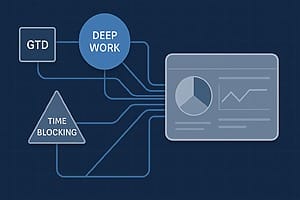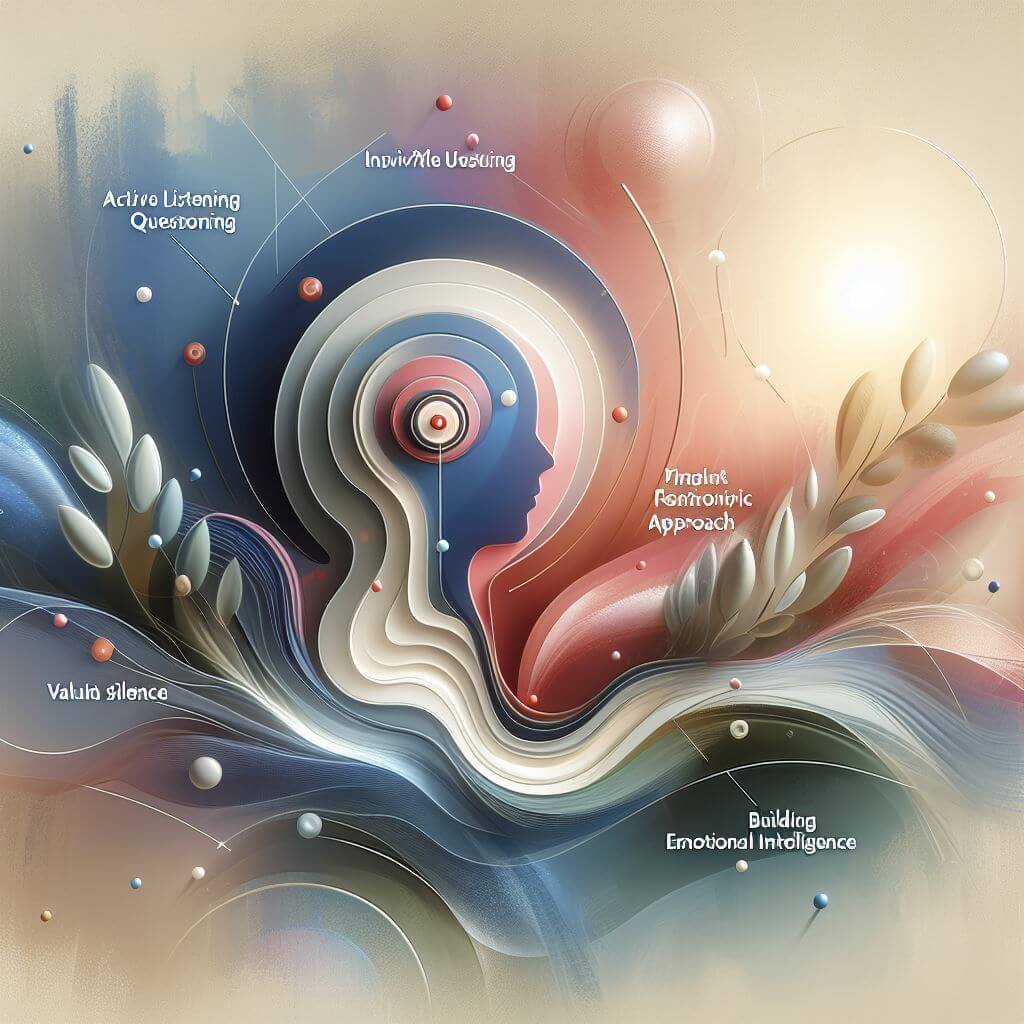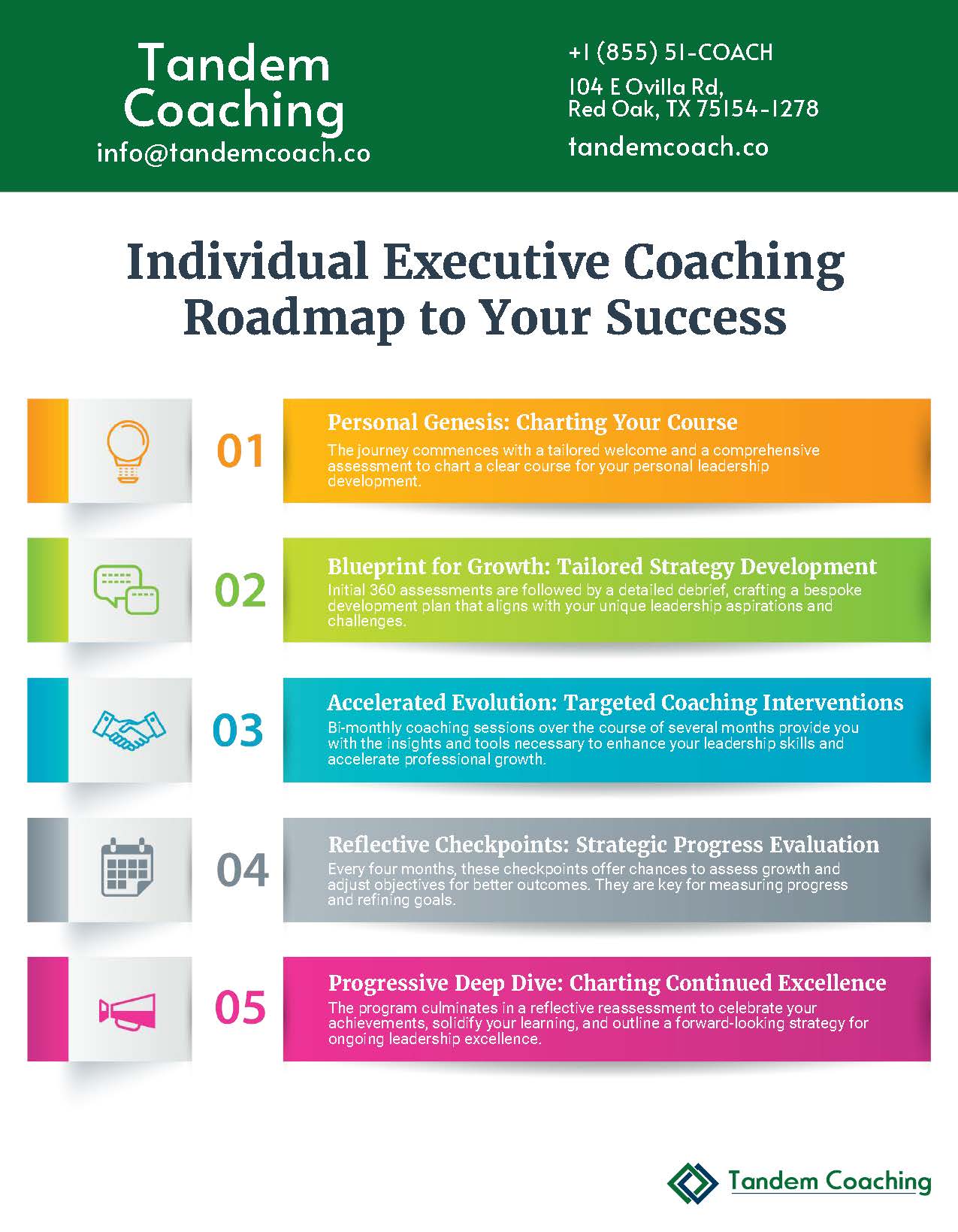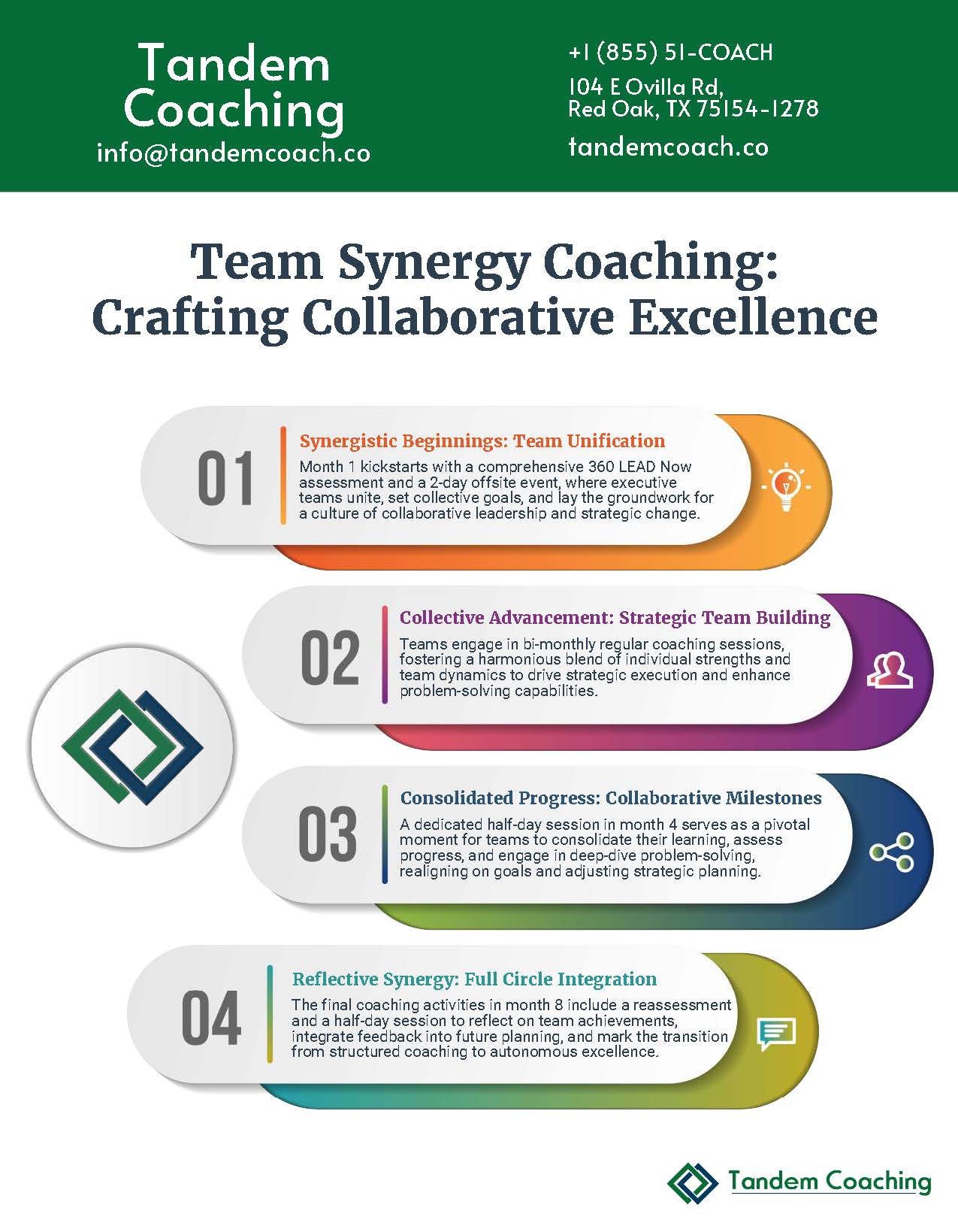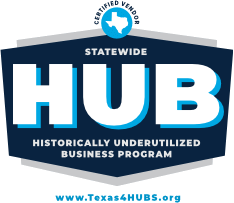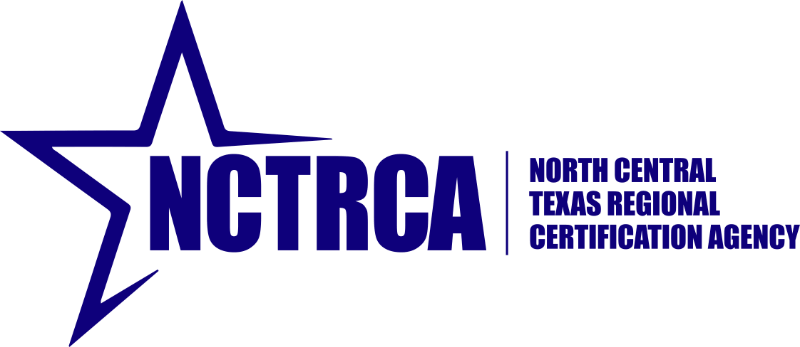You’ve heard about Getting Things Done. Maybe your CEO swears by it. Perhaps your most organized peer mentioned it. Or you stumbled across David Allen’s book in an airport bookstore. But between the 300-page book, countless apps claiming to be “GTD-compliant,” and that one colleague who turned it into a religion, you’re not sure where to start—or if it’s worth starting at all.
Here’s the reality: GTD isn’t magic, and it’s not complicated. At its core, it’s five simple steps that solve a universal problem: our brains are terrible at remembering things at the right time. That meeting follow-up hits you in the shower. The brilliant strategy occurs during your commute. The urgent email resurfaces at 2 AM. GTD fixes this broken recall system.
After helping hundreds of professionals implement GTD over the past two decades, I’ve watched it transform careers and I’ve seen it spectacularly fail. The difference isn’t discipline or intelligence—it’s understanding what GTD actually does (and doesn’t do) in today’s workplace.
What GTD Actually Is (Without the Mystique)
Getting Things Done is a workflow, not a philosophy. David Allen created it in 2001 when email was novel and Slack didn’t exist. Yet the core insight remains bulletproof: your mind is for having ideas, not holding them.
The entire system flows through five steps:

Capture everything that has your attention. Every commitment, idea, task, or concern goes into a trusted external system. Not your brain—a notebook, app, sticky note, voice recorder. The tool doesn’t matter; the habit does.
Clarify what each captured item means. Is it actionable? If yes, what’s the very next physical action? If no, trash it, file it for reference, or add it to a someday/maybe list. This step transforms vague anxiety into specific actions.
Organize the clarified items where they belong. Actions go on lists organized by context (what you need to complete them). Projects go on a project list. Calendar items get scheduled. Reference materials get filed.
Reflect on your system regularly. The famous weekly review ensures nothing falls through cracks and keeps your system current. Without this step, GTD becomes just another abandoned list.
Engage with confidence. When you trust your system completely, you can focus entirely on the task at hand. No mental overhead wondering what you’re forgetting.
That’s it. Five steps. Everything else—the apps, the labels, the competing methodologies—is just implementation detail.
Why GTD Still Matters in 2025
“In a world of infinite inputs, the ability to capture, process, and organize information isn’t just helpful—it’s survival.”
Twenty years later, GTD might matter more than ever. We’ve gone from dozens of daily inputs to hundreds. Email spawned Slack which spawned Teams which spawned Discord. Meanwhile, we’re supposed to be strategic thinkers, innovation drivers, and present parents—simultaneously.
Modern knowledge work presents three challenges GTD uniquely addresses:
Infinite Inputs: The average professional processes 121 emails and 74 messages daily, attends 11 meetings weekly, and juggles 5-7 major projects. That’s before counting random requests, ideas, and interruptions. Without a capture system, you’re playing mental Tetris with inevitable failure.
Context Collapse: Work happens everywhere—office, home, coffee shop, airplane. The boundaries that once organized our tasks have dissolved. GTD’s context lists evolve to match this reality.
Cognitive Overload: Research from Microsoft shows that digital information workers switch contexts every 6 minutes. Your brain isn’t just full—it’s frantically switching between completely different types of thinking. GTD externalizes this burden.
The promise isn’t inbox zero or perfect productivity. It’s what Allen calls “mind like water”—the ability to respond appropriately to whatever comes at you, neither overreacting nor underreacting.
Common Implementation Failures (And How to Avoid Them)
Let me save you three months of frustration. Most people fail at GTD for predictable reasons that have nothing to do with the system itself.
The Tool Obsession Trap: You spend weeks researching apps, configuring systems, building elaborate tagging schemes. Meanwhile, nothing gets captured. Start with paper. One notebook. Write everything down. You can optimize tools after you’ve built the habit.
The Context Time Warp: Allen’s original contexts (@phone, @computer, @office, @errands) made sense in 2001. Today, your phone is a computer, your office is wherever you open your laptop, and Amazon eliminated errands. Create contexts that match your reality: @focused (need concentration), @quick (5-minute tasks), @meetings (discuss with others), @waiting (blocked on someone else).
The Perfect System Paralysis: You want every project defined, every action crafted perfectly, every file organized before you start. This is like refusing to use email until you’ve pre-organized every possible folder. Start messy. Capture first, organize later.
The Weekly Review Skip: This is where 68% of GTD attempts die. Without regular review, your lists become graveyards of good intentions. Start with 30 minutes every Friday afternoon. Just scan your lists and calendar. That’s enough to maintain momentum.
The Solo Implementation: You implement GTD while your team continues chaos mode. Every interaction becomes friction. Share the basics with your team. You don’t need everyone doing full GTD—just respect for the concept that captured commitments matter.
The Minimum Viable GTD
Forget the full system initially. Start with just three components that deliver 80% of the value:
One Capture Point: Choose one place where everything goes. Physical notebook, Notes app, voice recorder—doesn’t matter. When something crosses your mind, capture it immediately. “Call dentist.” “Quarterly planning idea.” “Ask Sarah about budget.” Don’t process, don’t organize, just capture.
Daily Processing: Spend 15 minutes each evening processing what you captured. For each item, ask: Is this actionable? If yes, what’s the next action? If no, delete it or file it. This simple triage prevents accumulation overwhelm.
Weekly Review Lite: Every Friday, spend 30 minutes reviewing your lists and calendar. What’s done? What’s stuck? What’s coming next week? This isn’t perfection—it’s maintenance.
Master these three habits before adding project lists, contexts, or any other GTD components. Most people find this minimal version solves 80% of their organizational stress.
When GTD Shines (And When It Doesn’t)
GTD works brilliantly for certain situations and struggles with others. Understanding the difference prevents frustration.
Where GTD Excels:
- Multiple projects with many moving parts
- Roles with high interruption rates
- Information-heavy positions (research, analysis, planning)
- Remote work with asynchronous communication
- Career transitions with unclear priorities
Where GTD Struggles:
- Single-focus roles (pure coding, dedicated writing)
- Crisis-driven environments (emergency response, live operations)
- Highly structured roles with external workflow systems
- Creative work requiring long, unstructured thinking
This isn’t about good or bad roles—it’s about matching tools to reality. A surgeon doesn’t need GTD during surgery but might benefit during administrative duties. A programmer might skip GTD while coding but need it for managing multiple projects.
Your 7-Day GTD Experiment
Before committing to full GTD, try this one-week experiment. It requires 10 minutes daily and will reveal whether GTD suits your reality.
Day 1-3: Capture Everything. Carry one capture tool—notebook, phone, whatever. Write down every task, idea, commitment, or concern that crosses your mind. Don’t organize, don’t judge, just capture. “Fix printer.” “Vacation ideas.” “Team morale concern.” Everything.
Day 4-5: Process the Pile. Review everything you captured. For each item, decide: Can I do this in two minutes? If yes, do it now. If no, is it actionable? If yes, write the next physical action. If no, delete it or save it for reference.
Day 6-7: Notice the Difference. Continue capturing while processing daily. Notice: Are you sleeping better? Feeling less anxious about forgetting things? Having ideas at random times? This mental relief is GTD’s core benefit.
After seven days, you’ll know if GTD resonates with your work style. If it does, expand gradually. If not, you’ve invested just one week to learn that definitively.
“The power of GTD isn’t in perfect implementation—it’s in trusting that everything important is captured somewhere outside your head.”
Frequently Asked Questions
Do I need special apps or tools for GTD?
Any system that can hold lists works—paper, basic notes apps, even index cards. The behavior matters more than the technology. Start simple, upgrade only when you have a specific need.
How long does it take to implement GTD?
Basic capture habits form in 7-10 days. A functional system takes about a month. Full implementation with all contexts and projects might take 60-90 days. But you’ll see benefits from day one of consistent capture.
What if my organization doesn't use GTD?
GTD is personal productivity, not team methodology. You can implement it regardless of organizational chaos. In fact, GTD often works better in chaotic environments because it creates personal order within organizational disorder.
Is GTD compatible with Agile/Scrum/other methodologies?
Yes. GTD is about personal workflow, not project management. It complements any organizational system. Think of GTD as your personal operating system that interfaces with whatever your organization uses.
What's the most common reason people abandon GTD?
Skipping the weekly review. Without regular maintenance, lists become outdated, trust erodes, and the system collapses. If you do nothing else, maintain a simple weekly review.
How is GTD different from simple to-do lists?
To-do lists are single-dimensional—just tasks. GTD distinguishes between actions, projects, someday/maybe items, and reference materials. It also emphasizes next actions (specific and physical) rather than vague tasks. This specificity eliminates procrastination triggers.
Your Next Move
GTD isn’t revolutionary because it’s complex—it’s revolutionary because it’s complete. Five simple steps that handle anything life throws at you. Whether you implement the full system or just adopt the capture habit, you’ll gain something valuable: the peace of knowing nothing is falling through cracks.
If you manage others or face executive-level complexity, you’ll eventually hit GTD’s limits. That’s when you’ll need executive-specific adaptations that account for organizational dynamics, delegation decisions, and strategic thinking. But for now, start with the basics.
Tomorrow morning, grab a notebook or open a notes app. Write down everything pulling at your attention. That single act—externalizing your mental inventory—begins your GTD journey. Everything else builds from there.
The choice isn’t whether to get organized—it’s whether to use a system that’s helped millions of professionals worldwide or continue hoping your brain will somehow start remembering things at the right time.
Your move. Your next action. Your decision.
